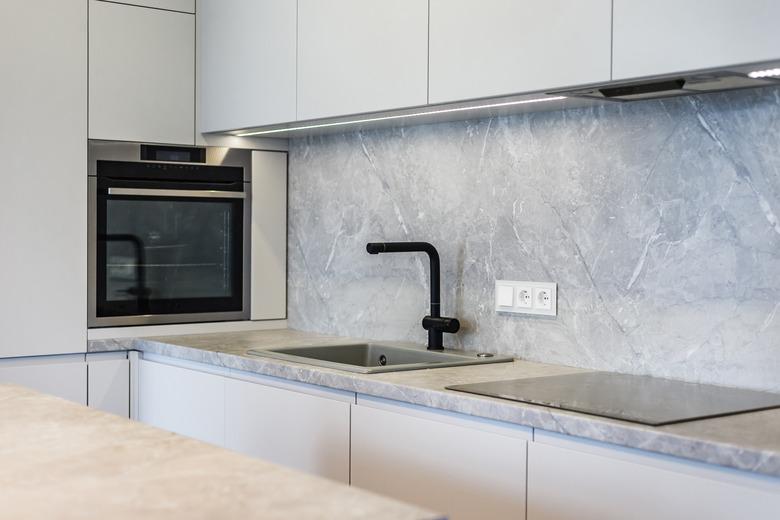How To Backflush Water Pipes
Sediment in the water pipes can reduce water flow by collecting inside faucets and faucet aerators, and it can also collect in faucet shut-off valves and even in pipe elbows. Sediment in the hot water often comes from the water heater, but if you have galvanized plumbing, it can also come from the pipes themselves, and it can affect the cold water pipes. If you have a well or hard water, the sediment may come from the water itself.
When you experience the problem at a particular faucet, you can usually correct it by backflushing that faucet. A systemic blockage that affects more than one fixture, especially tub and shower faucets that can be flushed individually, calls for a procedure that flushes the entire water system.
How to Backflush a Faucet
When you notice lower-than-expected flow at a particular faucet, the first thing to do is remove the aerator, turn it over under the faucet and run water through it backward to remove sediment from its screen mesh filter. If the mesh is blocked by scale, soak the aerator overnight in vinegar to remove the scale. That should improve flow, but if it doesn't, you can use a simple procedure to backflush the faucet:
- Put a coin or something similar inside the aerator to prevent water from flowing and replace the aerator.
- Turn off both water shut-off valves under the sink, disconnect the hose from the hot water valve and point it into a bucket.
- Open both the hot and cold handles on the faucet all the way. If the faucet has a single handle, set it in midway between hot and cold and turn it on.
- Open the cold water shut-off valve and let water flow from the hot water hose into the bucket for a few minutes.
- Turn off the water, replace the hose, remove the dime and then try the faucet. If things haven't improved, try reversing the flush by removing the cold water hose and running the hot water.
How to Backflush the Plumbing (Hot Side)
When sediment in the pipes affects water flow at more than one fixture, use this procedure to clean the hot water pipes:
- Turn off the valve to the hot water heater and locate a hot water faucet in the laundry room or somewhere else in the lowest part of the house. If you don't have one, attach a hose to the water heater drain plug and run it to a drain or outdoors. Turn off the power to the water heater.
- Locate the faucet farthest from the water heater and plug the aerator with a dime or something similar. Open both the hot and cold valves on the faucet.
- Open the hot water faucet in the basement or open the water heater drain plug. Let water flow for 10 to 20 minutes or until it runs clear for a minute or two.
- Close all the faucets, open the water heater valve and turn the hot water valve back on.
Sediment in the hot water pipes may be coming from the water heater, so be sure to flush the water heater as well as the pipes.
Read more: How to Flush a Water Heater
How to Backflush the Plumbing (Cold Side)
You use essentially the same procedure to flush the cold water pipes, but you need to shut off the water to the entire house and use an external water source, such as a neighbor's spigot. Run a hose to any spigot in your house that has a hose attachment or, if you don't have one, use an adapter to connect the hose to a kitchen or bathroom faucet.
After connecting the external water source, turn on the cold water side of the faucet to which the hose is connected and run the cold water on the faucet in the house that's farthest away. Let the water run for 10 minutes or so or until it runs clear for at least a minute.
